Top 5 Countries for Solar Street Light Installations
Dec 23, 2024
Solar street lights, as we can see from the name, get their energy from solar energy, so solar LED street lights are more suitable for installation in sunny areas. In the following article, we will learn which areas in the world are suitable for installing solar powered street lights and which country has the most solar street lights installed.
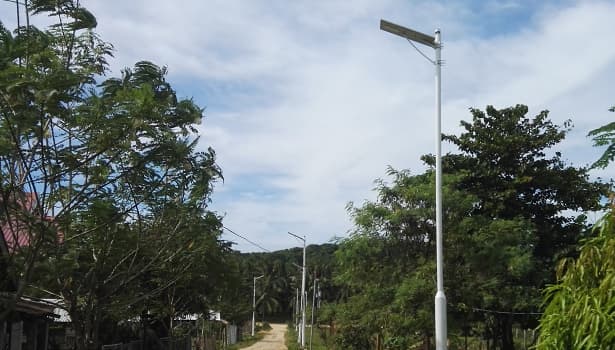
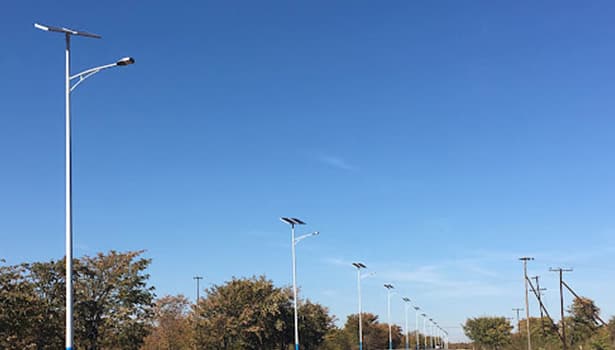
* The United Arab Emirates is located in the tropical desert area, with drought, little rain, and sufficient sunlight, which provides unique conditions for the use of solar powered outdoor street lights.
* The UAE government has been committed to promoting the application of renewable energy, hoping to achieve the goal of energy conservation and emission reduction by reducing dependence on fossil fuels and providing strong policy support for the promotion of solar street lights.
* The UAE actively participates in international cooperation, introduces and promotes the development of advanced solar energy technology, and continuously strives to develop and install solar powered LED street lights that adapt to desert climates and high-temperature environments.
* According to relevant data, the cost of electricity in the Philippines is very high, which has also brought great obstacles to economic development. It is a general trend to explore new energy sources to replace traditional electricity.
* The country's unique natural conditions and abundant sunshine every year provide them with abundant solar energy resources, which provide innate convenience for the development of solar street lights.
* There are many islands in the Philippines, and it is difficult and costly to access the traditional power grid. As an off-grid lighting device, solar LED street lights provide a reliable lighting solution for these remote areas.
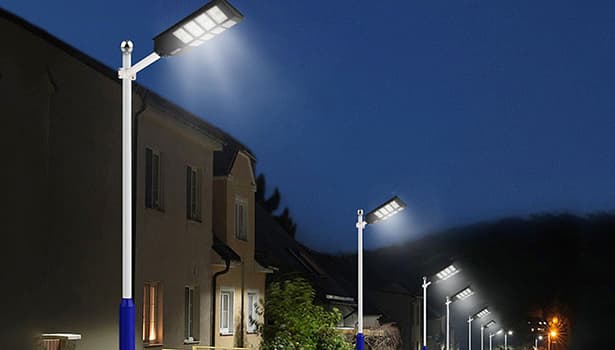
* The power infrastructure in many remote and rural areas of India is not perfect. Installing solar road lights in these areas improves visibility at night and significantly reduces the occurrence of traffic accidents and crimes.
* India's exploration and application of renewable energy has alleviated the crisis of rising electricity prices and unstable power supply.
* The Indian government has strong policy support for the promotion of solar energy and renewable energy and encourages state and local governments to install solar street lights. Initiatives such as the government’s Street Lighting National Program (SLNP) and rural electrification projects have significantly increased the deployment of solar street lights. India’s focus on renewable energy and its ambitious target of achieving 500 GW of non-fossil fuel capacity by 2030 make it a key player in the sector.
* Kenya is located near the equator and has abundant solar energy resources, which can provide stable and reliable energy for solar street lights.
* The Kenyan government attaches great importance to the application of renewable energy, especially solar energy. The "Vision 2030" development plan incorporates renewable energy solutions, including solar road lights.
* Solar powered streetlights are independently powered by solar panels and do not require the support of traditional power grids. They can significantly reduce the operating costs of public lighting and save a lot of electricity costs for local governments and communities.
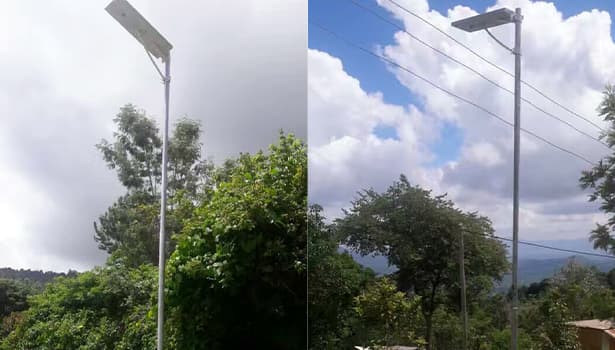
* California, Nevada, and other regions in the southwestern United States are rich in solar energy resources and can efficiently provide energy for solar LED street lights.
* Solar powered streetlights are in line with the United States' sustainable development strategy, reducing dependence on traditional electricity and reducing carbon footprint.
* With the continuous advancement of solar technology, the cost of solar-powered LED street lights has gradually decreased, and the efficiency has continued to improve. America's technological innovation capabilities have made these products increasingly adapted to local market demands.
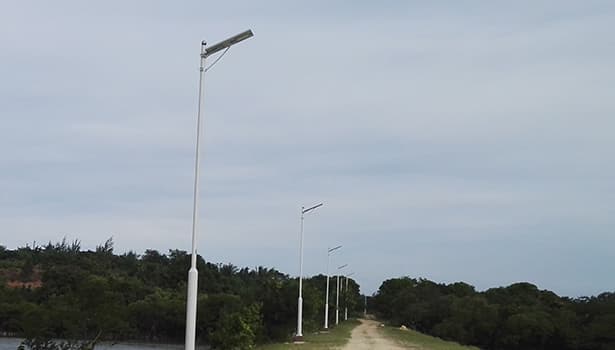
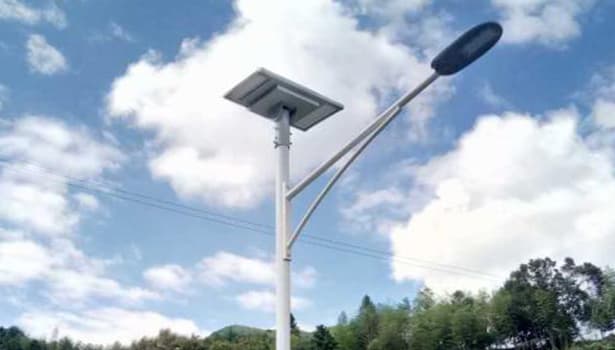
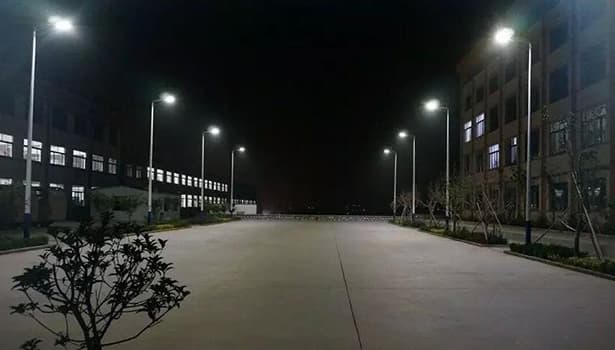

Which areas are suitable for installing solar-powered LED street lights?
1. Areas with sufficient sunshine
The main energy source of solar street lights comes from solar energy, so sufficient sunlight can ensure that they have enough energy to maintain the normal operation of street lights, such as in Southeast Asia and Africa in tropical areas. In addition, the arid Middle East and some plateau areas have strong solar radiation and rich solar energy resources, which are suitable for installing solar LED street lights.2. Remote areas without access to the power grid
For countries with complex natural environments and tight government finances, it is costly and difficult to access the power grid in some remote mountainous areas. Therefore, these areas do not have sufficient lighting at night all year round, which poses great safety risks. These areas are very suitable for using off-grid lighting tools such as solar powered street lights.3. Countries and regions with strong environmental awareness
Many countries attach great importance to sustainable development and the development and utilization of new energy. They are committed to achieving the goal of global carbon neutrality. For example, Germany, the Netherlands, France, and other countries in Europe prefer to use sustainable clean energy to provide lighting for cities and villages.
What countries have installed more solar street lights?
1. United Arab Emirates
The United Arab Emirates is one of the countries with more solar LED street lights installed and used, especially in the two central cities of Dubai and Azabu, where the coverage rate of solar powered street lights is very high.* The United Arab Emirates is located in the tropical desert area, with drought, little rain, and sufficient sunlight, which provides unique conditions for the use of solar powered outdoor street lights.
* The UAE government has been committed to promoting the application of renewable energy, hoping to achieve the goal of energy conservation and emission reduction by reducing dependence on fossil fuels and providing strong policy support for the promotion of solar street lights.
* The UAE actively participates in international cooperation, introduces and promotes the development of advanced solar energy technology, and continuously strives to develop and install solar powered LED street lights that adapt to desert climates and high-temperature environments.
2. Philippines
As one of the rapidly developing countries in Southeast Asia, the Philippines is also one of the countries with more solar powered streetlights.* According to relevant data, the cost of electricity in the Philippines is very high, which has also brought great obstacles to economic development. It is a general trend to explore new energy sources to replace traditional electricity.
* The country's unique natural conditions and abundant sunshine every year provide them with abundant solar energy resources, which provide innate convenience for the development of solar street lights.
* There are many islands in the Philippines, and it is difficult and costly to access the traditional power grid. As an off-grid lighting device, solar LED street lights provide a reliable lighting solution for these remote areas.

3. India
India's solar powered streetlights are developing rapidly. Driven by the national solar energy plan, solar street lights are quickly adopted as an important way to promote renewable energy.* The power infrastructure in many remote and rural areas of India is not perfect. Installing solar road lights in these areas improves visibility at night and significantly reduces the occurrence of traffic accidents and crimes.
* India's exploration and application of renewable energy has alleviated the crisis of rising electricity prices and unstable power supply.
* The Indian government has strong policy support for the promotion of solar energy and renewable energy and encourages state and local governments to install solar street lights. Initiatives such as the government’s Street Lighting National Program (SLNP) and rural electrification projects have significantly increased the deployment of solar street lights. India’s focus on renewable energy and its ambitious target of achieving 500 GW of non-fossil fuel capacity by 2030 make it a key player in the sector.
4. Kenya
On the African continent, Kenya is one of the representatives of solar powered outdoor street light applications. Nairobi, the capital of Kenya, has upgraded its main highways and streets to solar lighting, significantly improving nighttime visibility and safety.* Kenya is located near the equator and has abundant solar energy resources, which can provide stable and reliable energy for solar street lights.
* The Kenyan government attaches great importance to the application of renewable energy, especially solar energy. The "Vision 2030" development plan incorporates renewable energy solutions, including solar road lights.
* Solar powered streetlights are independently powered by solar panels and do not require the support of traditional power grids. They can significantly reduce the operating costs of public lighting and save a lot of electricity costs for local governments and communities.

5. United States
The United States has included solar street lights as part of its efforts to promote green infrastructure and reduce greenhouse gas emissions. Cities in California, including Los Angeles and San Diego, have implemented large-scale solar lighting projects as part of their sustainable development plans.* California, Nevada, and other regions in the southwestern United States are rich in solar energy resources and can efficiently provide energy for solar LED street lights.
* Solar powered streetlights are in line with the United States' sustainable development strategy, reducing dependence on traditional electricity and reducing carbon footprint.
* With the continuous advancement of solar technology, the cost of solar-powered LED street lights has gradually decreased, and the efficiency has continued to improve. America's technological innovation capabilities have made these products increasingly adapted to local market demands.

How to improve solar street light efficiency?
Although solar street lights have been widely used in the above five countries, for the users of solar street lights, how to improve the performance and luminous efficiency of street lights is still a problem they are very concerned about. The following are the ways to improve the luminous efficiency of street lights summarized by the experts of Nokin's solar street lights, and we hope that it will be helpful to you!1. Selected LED light sources
Prioritize the use of high-efficiency and high-brightness LED light sources, which can convert more electric energy into light energy and, at the same time, have a longer service life, reducing the trouble and cost of frequent replacement. Optimizing attributes such as color temperature, color rendering index (CRI), and light distribution is also critical.2. Optimize optical design
A high-quality lampshade effectively protects the light source and increases the light transmission rate; a reflector accurately reflects light and directs it to where it needs to be illuminated; and a lens focuses the light, controls the direction of the beam, and reduces light scattering so that the light is more centrally directed to the target area, lowering the energy loss and increasing the efficiency of the illumination.3. Enhanced solar panel performance
High-efficiency solar panels with a high light absorption rate and photoelectricity conversion rate can collect more solar energy and convert it into electricity under the same lighting conditions. In daily maintenance, please pay attention to keeping the surface of the solar panel clean, avoid dust and stains blocking the light, and regularly check and adjust its tilt angle so that the solar panel can always maximize the reception of sunlight and provide a stable power supply for the street light.4. Apply an intelligent control system
Use photosensitive sensors to sense the light intensity, turn on automatically when there is insufficient light, and turn off automatically when it is light. Intelligent adjustment of brightness and working hours according to the lighting demand at different times of the day and automatic dimming during low-demand hours such as late at night, which not only saves energy but also ensures sufficient lighting during peak hours.5. Strengthen system maintenance management
Clean the solar panels regularly to ensure that they absorb sunlight efficiently; check the health of batteries and replace aged or damaged batteries promptly to avoid affecting the luminous light of the street lamps due to the decline in the performance of the batteries; if you find that the LED lamps, controllers, and other components are damaged, they should be replaced on time to ensure the efficient operation of all parts of the system, reduce the loss of energy, and prolong the service life of the system.
6. Optimize battery performance
High-performance lithium iron phosphate batteries have the advantages of strong stability, high energy density, long life, etc., which can store more electricity and release it stably. Optimize the design and management of the battery, reduce the internal resistance of the battery, improve the charging and discharging efficiency, and reduce the loss and waste of energy inside the battery.7. Build an energy management system
Build a perfect energy management system to monitor and accurately control energy flow in real time. The system can reasonably adjust the energy use strategy according to the battery power, solar panel output power, and other factors to avoid unnecessary loss of energy and ensure efficient utilization of energy.8. Reasonable selection of materials and electronic components
The selection of high-efficiency battery management systems, power controllers, and drivers can effectively reduce the power consumption of the system. High-quality BMS can accurately control battery charging and discharging to extend battery life; efficient power controllers and drivers can improve the efficiency of power conversion and reduce the loss of energy in the transmission and conversion process.9. Focus on durability and reliability design
Ensure that the components of the streetlight have good durability and reliability, and adopt waterproof, dustproof, and corrosion-resistant designs, which can adapt to various harsh environments. Effective heat dissipation design can prevent the performance of the components from declining due to overheating, ensuring stable operation of the street light under different environmental conditions, reducing failures, and lowering maintenance costs.10. Reasonable planning of lighting demand
Fully consider the actual lighting demand in the planning stage and reasonably determine the layout, height, and angle of the street lights. According to the functions of different areas and the flow of people, choose the appropriate power level, accurately control the lighting intensity and range, avoid excessive lighting causing energy waste, and achieve the best balance between lighting effect and energy utilization.
Solar streetlights stand out as a sustainable, cost-effective, and environmentally friendly alternative to traditional lighting. In countries and regions such as India, the U.S., the Philippines, Kenya, and the UAE, this shift has made significant progress, leading to the global adoption of solar streetlights through favorable policy support, significant technological advances, and large-scale project installations, a trend that not only enhances local lighting infrastructures but also plays a critical role in building a sustainable, cleaner future.




